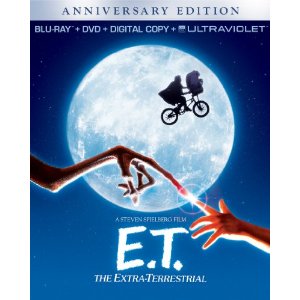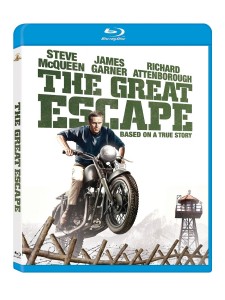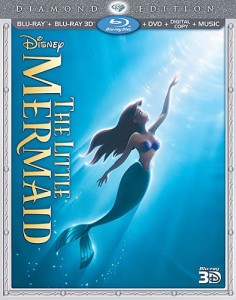E.T. The Extra-Terrestrial
Posted on December 13, 2002 at 5:17 am
A+| Lowest Recommended Age: | Kindergarten - 3rd Grade |
| MPAA Rating: | Rated PG for language and mild thematic elements |
| Profanity: | Brief but very strong language for a PG |
| Alcohol/ Drugs: | E.T. gets tipsy |
| Violence/ Scariness: | Characters in peril, apparent death |
| Diversity Issues: | All characters white |
| Date Released to Theaters: | 1982 |
| Date Released to DVD: | October 8, 2012 |
| Amazon.com ASIN: | B003UESJLK |
“E.T’s” 30th anniversary is being celebrated with a gorgeous new re-issue and I have one to give away. To enter, send me an email at moviemom@moviemom.com with E.T in the subject line and tell me your favorite movie alien. Don’t forget your address! (US addresses only.) I’ll pick one winner at random on October 14. Good luck!
A young boy named Elliott (Henry Thomas) finds an extraterrestrial who has been left behind when his expedition of alien botanists had to depart quickly to avoid detection. He brings E.T. home, finding through their connection a way to begin to heal his sense of loss at his father’s absence.
E.T. loves Elliott, but begins to weaken in the Earth’s atmosphere and needs to go home. With the help of Elliott and the neighborhood children, he sends a message to his friends. But before they can come for him, he is captured by government scientists. E.T.’s connection with Elliott is so strong Elliott becomes very ill, too. But both recover, and the children return E.T. to the spaceship, after E.T. reminds Elliott that they will always be together in their hearts.
This is an outstanding family movie, with themes of loyalty, friendship, trust, and caring. One of the most purely magical scenes in the history of film is when Elliott’s bicycle lifts off up into the sky.
Parents should know that the movie has scenes of peril that may be too intense for younger children. An apparent death is also upsetting. There is brief very strong language for a PG movie. This film was justifiably criticized for its almost complete absence of non-white characters.
DVD extras: Making of documentary, cast reunion, archives, trailer, behind-the-scenes footage, etc. Families who see this movie should talk about the way that the adults and the kids see things differently, and have a hard time understanding each other’s perspective. One reason is that they don’t try to share their feelings with each other. Could Elliott have talked to his mother about E.T.?
Families who enjoy this movie will also enjoy “Close Encounters of the Third Kind,” and they should try some Reese’s Pieces! They might also want to check out the classic movie E.T. catches a glimpse of, “The Quiet Man.”


